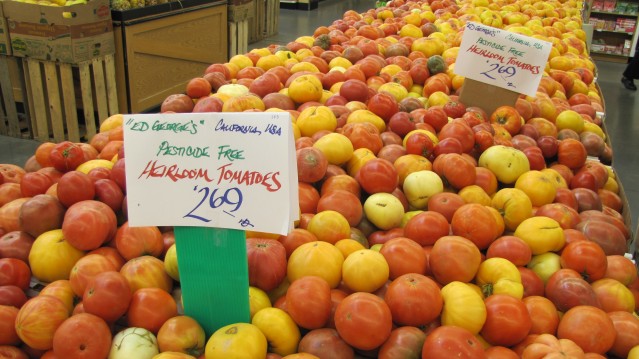CRAIG MILLER: Yeah, a lot of people think about the nice warm, consistent growing climate that California has. But I think what a lot of people don't realize is that many crops need some relief from that warmth and heat, in order to develop properly, right?
MS: Yes, that was interesting. I certainly didn't expect, when I was reporting, to find that cherries, for example, are extremely sensitive to climactic conditions. They need to get cold in the winter so that they can kind of hibernate, and preserve their energy for when they blossom. Well, we've been seeing less of that chill factor here in the state of California. We've also been seeing less fog.
CM: …in the inland areas.
MS: In the inland areas, you know, we're talking about the Central Valley. And so you've seen pretty significant drop-offs in cherry production
CM: And also what we're seeing are some of the indirect effects of temperatures on crops, such as what turned up in our reporting on a tiny little bug called the psyllid, which is making its home in California's potato and tomato fields, and can do enormous damage, as John Trumble, an entomologist at UC Riverside told us:
"The losses in San Diego County alone were about 85% of total productivity in 2004-2005; the losses were substantial. They were so large in Mexico, and Baja in particular, that they began planting tomatoes in screen houses, instead of large thousands-of-acre fields."
MS: What are these, bugs that are more accustomed to warmer climates somewhere else in the world?
CM: Yeah, the psyllids have always been in California at least part time. They would move up from Mexico; in the case of California, they're coming from Baja, basically. They would move into California during the summer season, and then retreat during the winters. But researchers at UC Riverside found just a few years ago, all of the sudden, they're not retreating anymore. They're staying over the winter. And because they're staying here during the winter, they can start a lot earlier and do a lot more damage. And they're being found farther and farther North all the time. They've been found in Northern California, and even up in Idaho, which of course is big-time potato country.
I think we all know that water is becoming a bigger and bigger issue in California, particularly for agriculture, but there's this interesting connection with salt. Talk about that.
MS: Right, remember that the Central Valley is built on top of what used to be the ocean, and like, 2 million years ago you'd go surfing in Modesto [both laugh]. So, that salt is at rest deep inside the aquifer. All those years of pumping ground water has brought huge amounts of salt to the surface, which they used to drain with water. So number one, you have an increasing problem with salt, and you have farmers who are utilizing water with salt that is actually hurting their plants. We talk about that in the documentary; we show farmers whose crops have been directly impacted.
CM: Almonds, in particular - another huge crop.
MS: Right, right. And two, you have the rising sea level. So, remember: climate change, rising sea level, could be as much as a foot-and-a-half by 2050, according to the National Academy of Sciences. And all of that saltwater coming into the Delta…
CM: …pushing back on it, basically.
MS: Exactly. What you've got is the state of California now committing huge amounts of its freshwater — that precious freshwater, the water that actually does come out of the mountains —is used to actually push back the salt water in the Sacramento delta to prevent it from coming down into the Central Valley. So, as a result, you have two things happening with water: One, less is falling as snow, so it's not preserved in the mountains in a big reservoir, and two, huge amounts of that freshwater is needed to hold back the rising sea.
CM: Did you get the sense, in your reporting, that there are solutions out there for these problems, or not yet?
MS: Uh, good question, I mean basically look, the overall solution is going to be to slow the rate of climate change. That is the overall big solution that you cannot get around.
CM: Right, reducing the carbon footprint.
MS: Reducing the carbon footprint. Short of that, you have scientists who are trying to develop new crop varieties that are more resistant to salt, more resistant to heat, and don’t need as much chill. And these are efforts. We visited one of the nurseries, I know you've talked to some of the scientists involved in the pest department--so they're trying very hard to kind of adapt to this circumstance. We'll see how effective that is, really.
See and hear more about all of the issues discussed here in the documentary, Heat and Harvest, which premieres Friday, September 28, on KQED TV, at 7:30 pm.
